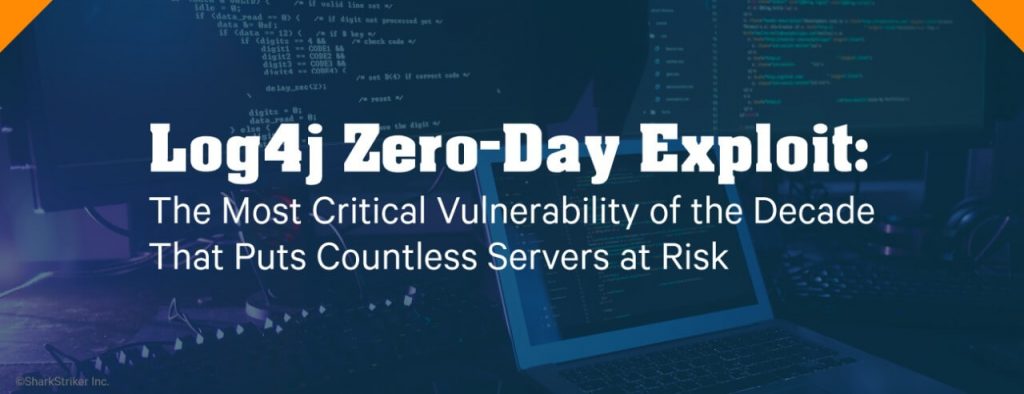Zero-day attacks are defined as any breach that exploits security flaws that have not been found by the software's owner.
This article will explain in detail how a zero-day attack works and what the best ways to prevent it are.
What is a Zero-Day Attack?
Zero-day attacks are breaches that exploit a security vulnerability that the software owner has not yet discovered. This vulnerability could be at the code, configuration, or hardware/firmware levels.
▸In the early days of entertainment, the term "zero days" was used. This was used to describe pirated copies of movies or songs that were distributed by bootleggers on the official release day.
▸Zero-day refers to a vulnerability discovered by software vendors after an attack has been launched. It becomes a race between vendors and exploiters once zero-day attacks start.
▸The vendors try to fix it as quickly as possible while the exploiters attempt to steal sensitive information from the system.
The Mandiant threat intelligence report for 2021 shows that 40% of all zero-day attacks recorded were committed in 2021.
Many businesses were forced online by the COVID pandemic of 2020. Many organizations have moved parts of their infrastructure or entire architecture to the cloud.
▸There are more devices at the consumer's end than ever before. Access to an application can be done from any device, including a smartwatch, mobile phone, or computer.
▸The Internet of things is now available in almost all homes and businesses. With hardware getting faster and cheaper, and new improvements being made every day, mobile internet connections are more speedy and accessible than ever before.
▸All of these advances add up to an increase in the organization's attack surface. Cybercriminals now have more options to attack organizations than they did a decade ago.
▸Zero-day attacks can be dangerous for an organization. Even with the best security measures in place, there is always a chance that a vulnerability will slip through the cracks.
The vulnerability could be in the organization's systems or one of its services. If the former, it is up to the service provider to honor the SLA.
Use of the 'Zero-Day' Term
- Zero-day vulnerability: This flaw is in an existing program that the vendor does not know about. However, the attacker knows it exists. The attacker knows that it exists.
- Zero-day attack: After discovering the vulnerability, attackers try different methods to exploit it. This usually takes the form of exploit code, which is a piece that attempts to exploit the vulnerability to gain entry to the system.
- Zero-day attack: The attackers attempt to insert their exploit code into software via various methods, including social engineering. When the zero-day attack succeeds, vendors become aware of unusual behavior in their systems. A denial-of-service attack, ransomware, or malware are all possible causes for this unusual behavior.
Types of Zero-Day Attacks
1. Targeted Zero-Day Attacks: These attacks exploit security vulnerabilities in systems that hold sensitive or valuable data. These attacks can affect large tech companies like Google or government agencies as well as competitors in an industry.
2. These are broad attacks that exploit a single vulnerability on multiple devices using particular software, hardware, or firmware. If an attacker discovers a flaw within a browser version, they will attempt to exploit all devices that have this browser version.
Zero-day attacks target operating systems, open-source code, network devices, and hardware. Zero-day attacks often target banks and financial institutions.
How Does a Zero-Day Attack Work?
Understanding how zero-day attacks work is essential. You need to be familiar with the roles of these key players.
The attackers: Hackers search the information available about a piece of software or hardware to discover security holes.
They use the holes they find to gain access to private data, demand ransom money, or shut down the system. These actors continue to search for vulnerabilities until they find one that they can exploit to their advantage.
The vendor: Vendors own the software and hardware. They are responsible for maintaining and updating the technology. Many companies rely on vendors for products and services to solve their problems and run their businesses.
Service level agreements (SLAs), which are binding contracts between vendors, guarantee security, privacy, and high availability. Vendors can respond to zero-day attacks.
In some cases, however, attackers may be able to target vulnerabilities in a company's system that are not covered by vendors.
End users: End customers consume products and services offered by vendors. An organization, employee, or individual can be considered the end user.
They are often the first to feel the effects of a zero-day attack. To ensure that the damage doesn’t increase, vendors work closely with end users.
A zero-day attack lasts anywhere from a few days to several months.
👉 A typical zero-day attack has the following life cycle:
Stage 1: An Vulnerability is Created
A vendor introduces a bug into the system. This could be in the form of a piece added by a programmer. A developer may use an obsolete version of a programming language to accomplish a business feature.
It could be an interface bug that allows the software to interact with other programs (e.g., an API). This could be caused by a badly configured application or network device.
You may also experience problems with outdated operating systems or hardware. Even the most basic security features such as password policies can be exploited by attackers.
The vendor doesn't know they have unwittingly created a vulnerability at this point. They don't have security controls in place, or the testing is not sufficient. The business continues as usual.
Stage 2: Attackers Find the Vulnerability
An attacker is always looking for small holes in systems. Targeted zero-day attacks are a good example. Attackers can conduct reconnaissance operations to find out what systems their targets use and how they built the infrastructure.
There are a growing number of vulnerabilities that they can be exposed to. An IoT device with a vulnerability that is not yet patched is one example.
A second example is improper encryption of data storage and transmission. To see if they can get a human to believe them, attackers also use social engineering techniques such as Phishing.
Stage 3: Vulnerability Can be Exploited
Once they find a weakness, they will figure out how to exploit that vulnerability. They usually inject malware code into vendor systems. They might intercept unsecure data packets and add malicious instructions to them during transit.
Some hackers simply sell exploit kits via the dark web by packaging the exploit code. These kits can be used to execute zero-day attacks like ransomware or denial of service.
Stage 4: Zero-Day Attack Starts
This is where the exploit code is executed in the vendor's software. This is where the exploit code is executed within the vendor's software.
End users may now notice strange behavior and sometimes not be able to access the application. Network monitoring systems can alert for unusual traffic.
You may experience any number of symptoms depending on the vulnerability. Vendors will have difficulty detecting zero-day attacks because of the complexity.
Stage 5: Vendor Addresses Attack
Now, the vendor knows that there is a security hole in their system. It is more difficult to pinpoint the source of the problem when their architecture becomes more complicated.
Backups should be brought up if a zero-day attack has resulted in an outage. Vendors should inform their customers about the nature and potential consequences of any attack.
This is when attackers attempt to cause as much damage as possible. The vendor must respond quickly to any attack.
Stage 6: Vendor Issues a Fix
The vendor determines the vulnerability and develops a solution to stop further exploitation. The security patch releases the fix. If the issue is configuration-related, internal changes are made and users are informed.
Stage 7: End Users Implement the Fix
The vendor has released a solution to the problem. The vendor now provides a fix to the attack. End users need to update their systems with these security updates.
Many organizations have a security patch management system to address this issue. Administrators will ensure that each device within the company network is upgraded as needed if it's a device-level issue.
This stage is over. The zero-day vulnerability has been officially sealed. Any activity to assess damage can be continued separately.
Log4j Zero-day Vulnerability

Log4j was the most famous zero-day attack of recent times. It occurred during the holiday season in 2021. Apache Log4j, a popular open-source logging tool for Java-based programs, is widely used.
▸This tool allows developers to keep track of the execution of code during execution, which can be used for troubleshooting purposes.
Check Point Software Technologies, a cybersecurity company has declared the Log4j zero-day vulnerability one of the worst ever.
▸It affects more than 40% of corporate networks around the world. This vulnerability was not limited to large tech companies like Apple, Google, and IBM.
▸Even security vendors like SonicWall and Fortinet were vulnerable to the Log4j zero-day vulnerability. MSN News reported that one-third of all global web servers were at risk.
▸Log4j was also discovered to be in home network equipment, such as routers or internet-connected smart devices.
Alibaba's cloud security team contacted Apache's open-source team to report a security flaw that had been discovered on November 24, 2021.
▸They also warned them about a potential global cyber attack that could be triggered by this flaw. The zero-day vulnerability in this instance allowed remote code execution (RCE).
▸An attacker could inject malicious text into log messages to allow code to be loaded from remote servers. These logs could be used to execute exploit code that connects with the Java Naming and Directory Interface.
▸JNDI is an interface to other essential components of a system such as Domain Name Service (DNS), Lightweight Directory Access Protocol(LDAP), and Java's Remote Interface.
▸End users were exposed to numerous attacks because of this single zero-day vulnerability. Remote code execution can be used to attack end users with malware, data breaches, and mining cryptocurrency.
▸Apache released a patch to address this vulnerability on December 6, 2021. The Cybersecurity and Infrastructure Security Agency of the United States (CISA), tweeted on December 10 a notice about the vulnerability and urged users to upgrade their systems and take all precautions to ensure security.
▸However, this patch did not fix the problem completely and three additional vulnerabilities were discovered. Apache released patches for each of these vulnerabilities on December 13, 17, 17, and 28 respectively.
▸The attackers knew about the number of Log4j-using systems in this zero-day exploit case. End users attempted to protect themselves but attackers were busy attacking various systems using wide-ranging methods. Some users couldn't patch themselves quickly enough.
Many organizations are still trying to patch every system, despite the Log4j zero-day vulnerability persisting. CISA has published a guide for organizations to help with remediations. Apache maintains a list of obsolete measures that users should avoid using.
Zero-Day Attack Prevention Best Practices
Unprecedented levels of chaos can be unleashed by zero-day vulnerabilities. Zero-day attacks are more severe than regular attacks because of their unexpectedness and novelty. These are the top practices organizations can use to reduce the impact of zero-day attacks.
1. It is Important to Define the Perimeters
Organizations today use a mix of cloud-based and on-premise infrastructure. Multiple cloud-based services can interact with the system. The first step in preventing a zero-day attack is to identify all endpoints and map a perimeter.
Security monitors can be more effective if there is a defined perimeter. This also allows DevSecOps teams the ability to determine the necessary security controls. Endpoint devices can have built-in hardware-enabled security as an option.
Endpoint protection platforms, (EPP), identify malware malicious scripts and keep them out of the network perimeter.
Endpoint detection and threat resolution (EDR), solutions constantly monitor and record user behavior across different endpoints. They employ data analytics and context intelligence to detect suspicious activity.
2. Secure Your Home With a Complete Arsenal of Security Controls
Zero-day vulnerabilities can expose victims to multiple attacks from various fronts. It is wise to invest in a wide range of security controls that are well-maintained.
While intrusion detection and prevention systems, firewalls, and content filtering technology offer endpoint protection, they don't provide enough.
To alert security personnel about unusual traffic, network monitoring software is necessary. Monitoring software is usually based on behavioral context. This is crucial in zero-day scenarios where the attack signature is not known, which allows it to slip through security systems.
Other security controls that are required include patch management, password Management, identity, and access management.
3. Segment the Networks
Enterprise networks are complex webs that have many networks interconnected. Protecting the network in its entirety is possible by segmenting it and defining its requirements.
An example is an internal network that employees can access. This requires high levels of protection. Data center networks connect all resources.
Security in this context is focused on encryption. Guest networks require only basic browser protection. The architects can also decide the security requirements by defining each segment.
Segmenting networks also ensures that an attack's impact is limited to a segment of the network and does not spread to the entire organization.
4. Consider Zero Trust Security
Zero trust Security ideology. It assumes that all users, devices, and applications must authenticate and be validated. Traditional security only protects endpoints. They are only reliable once data or users are inside the network.
Zero trust networks are monitored continuously and time-outs enforced. All users and devices are granted the minimum privilege necessary to function. The authentication process is multi-layered and strict access control policies are in place.
5. Streamline Your Security Process
Multiple layers of security are necessary to protect against a zero-day attack, as we have already mentioned. Security must be streamlined across all solutions to protect organizations.
This can be done by segmenting networks and creating separate network policies. Another way is to define user roles and create appropriate access policies. Hardware such as firewalls can also be grouped and related policies for each one.
It is important to only allow the relevant functionality at each level of security. Security can be too strict and cause usability problems.
Automation should be used wherever possible, especially when it comes to patch management and policy changes. Configuration and management should be limited to one console.
6. Mix AI and Human Threat Hunters to Get the Best Mix
Threat intelligence includes information from multiple sources about vulnerabilities, as well as existing vulnerabilities. These sources include public feeds from organizations like CERT and information shared with industry alliances.
Artificial intelligence uses this threat intelligence to predict potential attack signatures. The high volume of threat information makes machine learning in security particularly efficient.
It is important to keep in mind that zero-day vulnerabilities can have undetected indicators of compromise (IoC). For creative, intuitive, and strategic thinking, human intelligence is necessary.
Numerous organizations offer huge bounties to hackers, encouraging them to test their systems and find zero-day vulnerabilities. They can keep one step ahead of malicious attackers by doing this.
7. A Contingency Plan For an Emergency Response is Essential
Although prevention is the ultimate goal, it is vital to have an incident resolution plan (IRP). It is impossible to predict the impact of a zero-day attack so the IRP must be current and thoroughly tested.
8. Reduce Technology to the Essential
Every aspect of a business can be benefited from technology. You can fine-tune any feature using an app, a programming library, or a service.
It is tempting to try every one of them, but it is safer to only use the essential ones, especially when you are working with live servers.
9. Your Employees Should be Trained
- According to the Verizon data breach investigation report 2022, 94% of all known attacks were sent by email. Security is the weakest link.
An organization can be vulnerable to both internal threats and social engineering attacks, regardless of how sophisticated its security strategy and technology are.
Employees must be taught how to recognize and deal with suspicious behavior within the network, applications, and services they use. Employees should be given a plan for action in the event of a suspected compromise.
10. Backups are Vital
The speed at which systems can be restored after a zero-day attack is crucial to recovery. A well-designed backup strategy is essential.
Backup plans should include information about which assets are to be backed up, the frequency of backups when they can be used to restart systems, and how frequently they are tested for reliability and accuracy.
Takeaway
Zero-day attacks can only be tackled with a comprehensive security approach. It is possible to add too many layers of security, which can lead to losing the ability and productivity of users.
Security systems that are most effective balance preemptive and reactive security measures. Zero-day attacks can be stopped by a good combination of automation and human intelligence.

